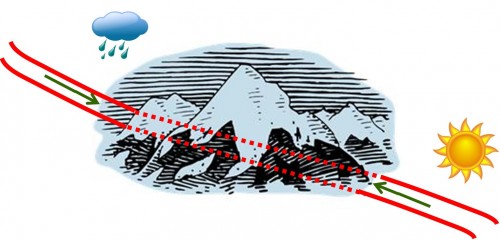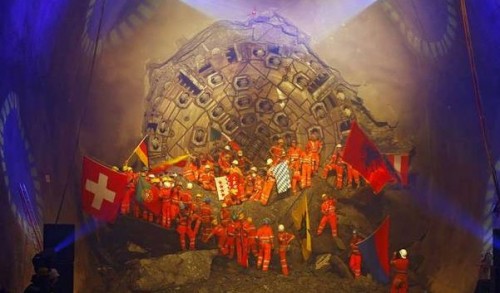How to design software
I think I recently understood how software should be designed — or at least, since I have informally practiced the method for some time, how to explain it. Maybe not absolutely all types of software, but the most important kind: APIs (abstract program interfaces). The key task in software design is to define proper interfaces; if it is done right, everything else will fall into place, and if it is done wrong, there will be no end of problems everywhere else.
To put a Swiss theme to the description I may call this approach the Gotthard method. You are building a tunnel, starting from both sides at the same time, the northern, rainy, German-speaking part, and the southern, sunny, Italian-speaking part. (Actual languages and climates may vary.)
For the method to work it is really important that the two crews should meet somewhere in the middle:
In software design we are typically confronted with two views:
- The client view: application software needs certain abstractions and functionalities that will make it easy to produce clear, simple, extendible, reusable client programs.
- The supplier view: the necessary mechanisms are usually available in a raw form directly reflecting the underlying platform, a combination of hardware and software facilities.
Good design is a negotiation and iteration process that tries to reconcile the two views, working top-down from the client side and bottom-up from the supplier side, just as you would work when digging a tunnel between Unterwald and the Tessin.
As an example, consider a Web-oriented API. On the supplier side, we have a stateless protocol with essentially one mechanism: processing a request and sending a response. On the client side, we want to enable the building of applications, such as an e-commerce site, which need to pretend that they are working with stateful sessions, just as with a classical client-server GUI setup. The task of building software is to provide what the client application needs, in terms that make sense to the client and with all the abstractions that it needs — in our example, SESSION, STATE, USER and so on.
Since these higher-level abstractions are not directly provided by the supplier side, they need to be implemented or, to use a more appropriate term, faked. After all, everything in computer science is about faking: pretending that we have machines that we really don’t, simply by building them conceptually, in the form of APIs, in terms of machines that we have already built (bottom-up approach) or hope to build (top-down approach). “Building” a machine here means— except for the bottom-most machines, down at the level of the hardware, which very few programmers ever use directly anyway —faking them again, in terms of simpler ones. Fakes all the way down.
The process of software design then consists of developing intermediate levels of abstraction until we reach a compromise: a set of abstractions that satisfy the needs of application programmers and are efficiently implementable (or better yet, already implemented as part of this negotiation process) on the basis of what was available in the first place.
A poorly functioning software process will be more like yoyo design: trying something too abstract, then something too low-level and so on, converging too late if at all. Effective design is like boring a tunnel using modern engineering techniques, which rely on a clear understanding of where the crews start on both sides and make sure they end up meeting in the right place.
Photo reference: Herrenknecht AG, www.herrenknecht.com.


 Informatics Europe
Informatics Europe LASER summer school
LASER summer school Propulsion Academy
Propulsion Academy